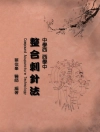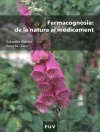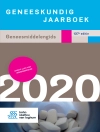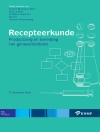This book provides an overview of nanoparticle production methods, scale-up issues drawing attention to industrial applicability, and addresses their successful applications for commercial use. There is a need for a reference book which will address various aspects of recent progress in the methods of development of nanoparticles with a focus on polymeric and lipid nanoparticles, their scale-up techniques, and challenges in their commercialization.
There is no consolidated reference book that discusses the emerging technologies for nanoparticle manufacturing. This book focuses on the following major aspects of emerging technologies for nano particle manufacturing.
I.
Introduction and Biomedical Applications of Nanoparticles
II. Polymeric Nanoparticles
III.Lipid Nanoparticles
IV. Metallic Nanoparticles
V.Quality Control for Nanoparticles
VI. Challenges in Scale-Up Production of Nanoparticles
VII. Injectable Nanosystems
VIII.Future Directions and Challenges
Leading scientists are selected as chapter authors who have contributed significantly in this field and they focus more on emerging technologies for nanoparticle manufacturing, future directions, and challenges.
Table of Content
Part 1 Introduction and Biomedical Applications of Nanoparticles .- 1. Introduction to Nanomaterials and Nanotechnology.- 2. Biomedical Applications of Nanoparticles.-
Part II-Polymeric Nanoparticles. – 3. Nanocrystallization and Nanoprecipitation Technologies.- 4. Microfluidics Technology for Nanoparticles and Equipment-. 5. Production of Nanocomposites via Extrusion Techniques.- 6. The Use of Supercritical Fluids Technologies for Nanoparticle Production.- 7. Salting out and Ionic Gelation Manufacturing Techniques for Nanoparticles.- 8. Nanogel Synthesis by Irradiation of Aqueous Polymer Solutions.- 9. Cellulose acetate based nanofibers: Synthesis, Manufacturing and Applications.- 10. Production of nanofibers, environmental challenges and solutions.-
Part III-Lipid Nanoparticles.- 11. High Pressure Homogenization Techniques for Nanoparticles.- 12. Solvent emulsification evaporation and solvent emulsification diffusion techniques for nanoparticles.- 13. Ultrasound Activated Nanoemulsions.- 14. Multiple Emulsions: Emphasizing on industrial applications.- 15. Membrane techniques for the preparation of nanomaterials.- 16. Self-assembling Lipid Nanoparticles/Nanosystems (SLNN) using Hydrophilic Solvents: Overview and Industrial Uses.- 17. Nanoemulsions – An emerging technology in drug delivery.-
Part IV- Metallic Nanoparticles .- 18. Manufacturing techniques for carbon nanotubes, gold nanoparticles and silver nanoparticles.- 19. Radio frequency (RF) plasma-based Synthesis of metallic Nano particles for Biomedical Application.- 20. Techniques for accurate sizing of nanoparticles.- 21. Silver nanoparticles synthesis from cyanobacteria: Environmental and biomedical applications.- 22. Selenium Nanoparticles: Green Synthesis and Exploitation.-
Part V- Quality control for nanoparticles .- 23. Practical guidelines for the characterization and quality control of nanoparticlesin the pharmaceutical industry.-
Part VI-C
hallenges in scale-up production of nanoparticles .- 24. Nanomedicine Scale-Up Technologies: Feasibilities and Challenges.- 25. Patent survey on recent technology for nanoparticles.-
Part VII-Injectable Nanosystems .- 26. Injectable Nanosystems and Inherent Nano-Serum Interactions.-
Part VIII-
Future directions and challenges .- 27. Current Challenges and Future Directions in Nanomedicine.
About the author
Professor Yashwant Pathak, M.S., Ph.D. in Pharmaceutical Technology from Nagpur University, India and EMBA and MS in Conflict Management from Sullivan University, KY, USA. He is the Associate Dean for Faculty Affairs at the College of Pharmacy, University of South Florida. Tampa, Florida. With extensive experience in academia as well as industry, he has to his credit more than 100 publications and 2 patents, including 5 books in Nanotechnology and 2 in Nutraceuticals and several books in cultural studies. He is also the Coordinator for the International Center for Cultural Studies.
Dr. Jayvadan K. Patel is a Professor of Pharmaceutics and Principal, Nootan Pharmacy College, Visnagar-384315, Gujarat, India. He has more than 20 years of academic and research experience, has published more than 180 research and review papers in international and national Journals. He is a recipient of the prestigious “APTI Young Pharmacy Teacher Award’by the Association of Pharmaceutical Teachers of India. He has completed 12 industry and government sponsored research projects.












